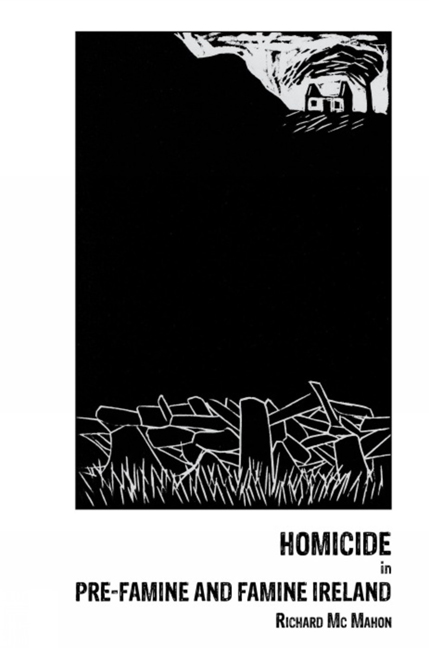Book contents
- Frontmatter
- Dedication
- Contents
- List of tables and figures
- Preface
- ‘A violent society’?
- 1 Homicide rates in Ireland, 1801–1850
- 2 ‘Do you want to pick a fight out of me?’: Homicide and personal relations
- 3 ‘Sending them to heaven’: Homicide and the family
- 4 ‘The tranquillity of a barrel of gun powder’: Homicide and land
- 5 ‘The madness of party’: Homicide and sectarianism
- Conclusion
- Appendix one: Methods and sources
- Appendix two: Homicide and motive
- Bibliography
- Index
1 - Homicide rates in Ireland, 1801–1850
- Frontmatter
- Dedication
- Contents
- List of tables and figures
- Preface
- ‘A violent society’?
- 1 Homicide rates in Ireland, 1801–1850
- 2 ‘Do you want to pick a fight out of me?’: Homicide and personal relations
- 3 ‘Sending them to heaven’: Homicide and the family
- 4 ‘The tranquillity of a barrel of gun powder’: Homicide and land
- 5 ‘The madness of party’: Homicide and sectarianism
- Conclusion
- Appendix one: Methods and sources
- Appendix two: Homicide and motive
- Bibliography
- Index
Summary
How common was homicide in Ireland in the first half of the nineteenth century? Between 1841 and 1850, the decade for which the most consistent data is available, there were 2,792 reported cases of homicide in Ireland. This figure comprises all incidents of alleged murder, manslaughter and infanticide reported by the police in the country throughout the decade. Of the total number of incidents reported, 1,230, or forty-four per cent, were alleged cases of infanticide, while the remaining 1,562, or fifty-six per cent, were alleged murders or manslaughters. The rate of homicide (excluding infanticide), therefore, was 1.97 per 100,000 of the population.
Is the Irish rate unusually high when compared to other countries? Given the widely recognised dangers involved in international comparisons of crime rates, this is a difficult question to address. Differences in the efficiency of criminal justice systems, the definitions of offences and the differing methods employed in the compilation of crime statistics all render comparison difficult. Perhaps the most reliable comparison that can be made is with England and Wales, given the broad similarities between both the criminal law and criminal justice systems. Even here, the situation is complicated by the fact that comparable national data based on reported incidents for England and Wales is not available before the late 1850s, which means that a direct comparison can only be made with English and Welsh figures from later in the century.
There is already a degree of confusion in the historiography as to how Irish rates in the pre-Famine and Famine periods compare with those found in England and Wales in the latter half of the nineteenth century. Connolly, in his general survey of homicide in modern Ireland, suggests that the country endured a ‘high level of violence relative to other parts of the United Kingdom’, with homicide rates in the 1830s and 40s ‘two-and-a-half times that recorded in England and Wales in the 1850s and 1860s’. In contrast, McCabe's analysis of the rates, based on the same Irish sources, suggests that homicide rates in Ireland before the Famine, while higher, were not markedly different from those recorded for England and Wales in the 1860s and 1870s. The main reason for the difference is that Connolly includes cases of infanticide in his figures while McCabe, in making his comparison, excludes them.
- Type
- Chapter
- Information
- Homicide in pre-Famine and Famine Ireland , pp. 12 - 31Publisher: Liverpool University PressPrint publication year: 2013



